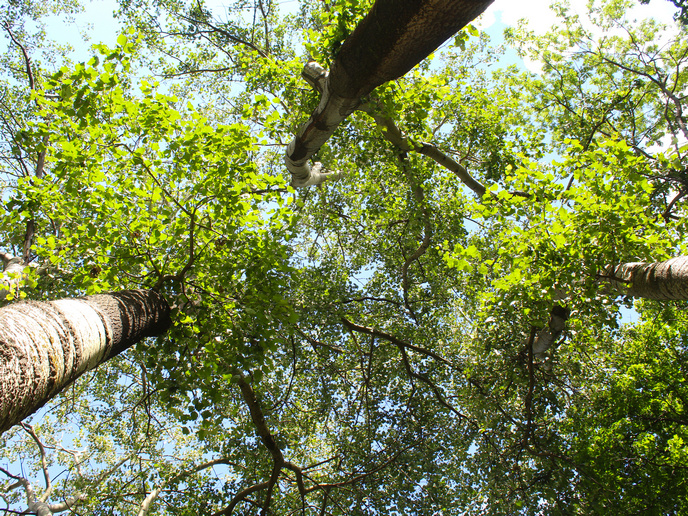Uncovering the metabolism of poplar trees
The poplar tree sure is a popular one. It is a critical wood-producing crop, a model system for molecular research and even a promising biomass crop for future biorefineries (as explored in (PHYSIO-POP). “Many researchers work on poplar to understand processes that are well-developed in trees, such as wood formation,” explains Wout Boerjan(opens in new window), full professor at Ghent University(opens in new window) and principal investigator at the VIB Center for Plant Systems Biology(opens in new window). “The more information we have on a given model system, the faster new information can be gathered. It speeds up new discoveries,” he says. Yet although we already know many of the metabolites in poplar, many still await discovery. Identifying metabolite structures and discovering their biosynthetic pathways and genes can potentially be used to make better trees. “Better trees means trees that make wood that is easier to convert to pulp or fermentable sugars, using less chemicals or less energy, for example,” notes Boerjan. “We already showed that the downregulation of genes involved in lignin biosynthesis can significantly improve the processing efficiency of poplar wood.” In the POPMET(opens in new window) project, which was funded by the European Research Council(opens in new window), Boerjan and his team used a range of techniques to study metabolites and their pathways in poplar wood, bark and leaves. The research has already borne fruit. “We have sequenced the genomes of 750 black poplar trees and we have the metabolite profiles of all of these trees, so we have an enormous database of compounds and the genes that are potentially involved in their biosynthesis,” adds Boerjan. “This database is the beginning of many discoveries and grant applications.”
Extracting and analysing metabolites
In the project, the team first extracted metabolites from poplar leaves. They then used a technique known as Ultrahigh Performance Liquid Chromatography Mass Spectrometry (UHPLC-MS) to separate the thousands of compounds inside and predict which are structurally similar. They then made networks of structurally related metabolites, which represent tentative biosynthetic pathways. To discover the genes encoding the enzymes in these tentative pathways, the team compared the natural variation in the abundance of a given metabolite with the variation in the DNA sequence in the population of 750 genetically different poplar trees. This pinpointed important biosynthetic genes. Finally, to prove that these genes encode enzymes involved in the production of key compounds, the corresponding enzymes are made in Escherichia coli for enzymatic tests, and they also use CRISPR-Cas gene editing in poplar trees to knock out the gene. The researchers then check to see if the predicted product compound is still made.
Moving beyond metabolic pathways
“Poplar is a wood-producing crop that is easy to sexually cross to make fast-growing hybrids between different poplar species, and it is also amenable to genetic engineering and gene editing,” says Boerjan. “The team now hopes to identify additional genes to design new ways to improve biomass yield and quality. The sequenced population of trees can also be used to retrieve genes involved in height and diameter growth, or tolerance to diseases and pests, for example.” The researchers will continue working with POPMET data through new grants, to follow up on the hundreds of genes linked to metabolic pathways identified in the project. “If there is anyone interested in discovering the biosynthesis of a particular metabolite from poplar, or in testing the biological activity of a poplar metabolite, they can contact me,” adds Boerjan.







